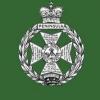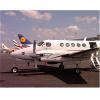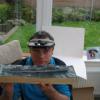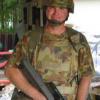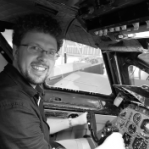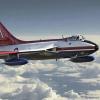Leaderboard
Popular Content
Showing content with the highest reputation on 27/12/18 in all areas
-
When Airfix released their 1/72nd Victor B.Mk.2 (BS) at the end of 2016 I had to get one as soon as possible and this was supplied via the always reliable MJW Models. It was a Christmas present from me to me and was started on Boxing Day. In my mind there was no doubt what I wanted, XL512 operated by No. 139 Squadron out of RAF Wittering 1963-64 in anti-flash white complete with a Blue Steel missile. I am too young to remember this colour scheme but when I start to think about it, anti-flash from nuclear weapons? In England? The four minute warning? Mass scrambles? Get off the ground as fast as you can? Dispersed locations? A "bucket of instant sunshine"? The Soviet threat was so real way back then. To the kit. Not cheap, I think I paid over £50 however the Airfix Victor was absolutely worth every penny, no question. I cannot believe how Airfix has moved so far forward in the last few years. Overall it was a joy to build and I had around 90% of it completed by May 2017. On to the photos: The Airfix kit certainly shows the very complex aerodynamics of the Victor B.2, starting with that unique double crescent wing which was based on captured German research from WW2. Personally I love the larger 'elephant ears' air intakes as well as the 'Küchemann carrots' on the trailing edges, also the four Rolls Royce Conways buried in the wing roots. Even today the Victor looks futuristic. Obtaining the overall anti-flash white finish was a challenge. The kit instructions specify Humbrol 130 satin white which is a paint I have used with some success however airbrushing one colour on a kit this size didn't really feel like an option. I had already experimented with Halfords Appliance White on a 1/48th scale F-16A and I decided to try this approach to the Victor. I had learned to apply several coats by several passes and not to drench the model. Overall it worked really well though there were several areas on the wings where maybe another coat might have helped. I have to say that, for me, the kit went together very well indeed. The only area where I felt I needed filler was very lightly around the jet air intakes. This photo shows what was a fault for me, where the main fuselage joins the cockpit area. For whatever reason, and it might be my ham fisted approach, there was a definite step up between the two sections. I took the view that with my lack of skills at sanding and filling it was just better to leave it as it is. What this photo does show is the detail in the cockpit with the ejection seats clearly visible. It also shows the complexity of the cockpit canopy which was what scared me off completing this kit for such a long time. In the end I masked mine off using various masking tapes and although not perfect the end result isn't too shabby. I understand that there was a masking set available for this kit, maybe worth a thought. My final photo of XL512 in which the Blue Steel round can be seen tucked away under the Victor B.2 fuselage. A very enjoyable build of an iconic V-Force bomber. Michael30 points
-
Not my usual choice of subject but I was attracted by the colour scheme. Built directly from the box except for the addition of the 4 whip aerials on the forward fuselage. A nice little kit all round really and something a little different. Fit of parts was pretty good but some location details were a little vague and some of the smaller parts needed tidying up. I may even be tempted at some stage to another one but in the (in my opinion) not so attractive Medium Blue and Dark blue scheme which is also provided in the kit. Thanks for looking and a Happy Christmas to you all. IMG_0106 IMG_0107 IMG_0108 IMG_0111 IMG_011023 points
-
Hi Guys Su-27UB 1/72 Heller Kit, fit is very poor and need a lot of sanding and filling, the digital camo is done using masking tapes, and roundel is painted as the kit decals were oversize, few more decals left but have to pause as I have none, maybe if I get lucky next year will put the remaining decals, till then here is my last built of the year, Happy New Year everyone. Cheers,18 points
-
This is part 2 of my unusual RAAF aircraft of WWII, the Seversky/Republic P-43B Lancer. She was the precursor to the famous P-47 Thunderbolt and that’s about where the similarities end, the P-47 was a hugely successful aircraft while the P-43 was a bit of a failure! Due to the desperate need for aircraft by the RAAF at the beginning of the war, they received allsorts of aircraft. Some were good and some were really bad and this was one of them, By the time the RAAF received these aircraft the USAAF had classed them as RP-43’s, with the “R” standing for “Restricted from Combat”. They were initially used by 1 PRU as Recon aircraft (I can’t find any info as to whether they actually saw combat in any role) and later fitted with test bomb racks to see if they were any good as dive-bombers. They remained in RAAF service for only about 18mths, before being returned to the USAAF. A56-5 unfortunately was damaged beyond repair in a landing accident in Dec42 and was returned in boxes. The P-43 suffered from many this including brake issues! This model is now quite hard to find and is very typical of the earlier Classic Airframe model, unfortunately my model had had a hard life and most of the resin parts were damaged beyond repair. The build was pretty much OOB with just a few bits that needed to be scratchbuilt. Model: Classic Airframes 1/48thRepublic P-43 Lancer Paint: Mr Paint, SMS Lacquer Acrylics & LifeColor Acrylic (main), Mr Hobby and Tamiya Acrylics, Model Master Metalizer Lacquers Please enjoy She’s a nice addition to my growing collection of the more unusual RAAF aircraft of WWII. …and with her more famous big brother???17 points
-
One of the best models of modern combat planes on the market in the 1:48 scale. The model is quite complicated to build, but it's very good details and a great fit. Su-33 Kinetic 1:48 I build my Su-33 in two version now I show you one of them. . Su-33 Kinetic 1:4816 points
-
Something I bashed together over the Christmas break,an IBG kit OOB,just through in some extra gear to make it look the part(and hide my rough work),Cheers.15 points
-
Hello all, I’ve just finished the 1/72 Eduard Fokker Dr.1 (lovely little kit) or phase 1 at least; part of a master plan to encase it in flight, in resin 🤔 A ‘spinning’ prop, streamers & scarf will be added just before entombment... ’Manfred’ is a resin figure from PJ Productions. Phase 2 to follow (hopefully) Guy13 points
-
This simple little kit... ...is really the F4F-4 airframe with the lines and bumps for folding wings, 6 guns and wrong cooling gills on the engine cowling. So some mods tried.... 4 guns received barrels and the outer ports deleted. 2 big cooling gills opened, to replace the existing, Suitable pilot figure installed in the open cockpit. Finish is spraycan yellow, Ali foil fuselage and under surfaces, mixed green hand painted tail, white bands and cowl front are hand painted, and black lines cut from borders of Airfix decal sheet etc One highlight of the build was finding that hole-punched discs of Ali foil tape were perfect for the wheel hubs! Fun Build?? Does exactly what it says on the tin.! Cheers, and Happy New Year all!11 points
-
11 points
-
Hi All Here's the old mould OOB (except for aerial) and the new mould with added invisible cockpit detailing. They were experiments in canopy masking, chipping and washing, build thread here https://www.britmodeller.com/forums/index.php?/topic/235045786-two-airfix-a6m2b-zeros-then-and-now/&page=2&tab=comments#comment-3226933 The old one had some sink marks where the pilot's supposed to locate in the cockpit, but this was ok as I was trying Chipping Fluid for the first time. Thought they may be a lucky escape. The decals were non-conforming and brittle, so they became part of the weathering. The new mould boxing would have you paint the underside grey, but as it was a trainer it should be yellow. I liked the yellow look, so it stayed as it might have been before upper camo was applied. First try with a Flory Wash, black was all I had, looks like I'll be getting some others now. Thanks to all who joined along, see you on the next one. Comments and suggestions welcome Cheers Steve11 points
-
Haven't done this for a few years now but thought I'd join in with the festive fun and share this year's output with you 'orrible lot.. All models finished this year have been built for Airfix Model World magazine or Airfix themselves, hopefully, next year I'll include a few more of my own. Anyway hope you like them and thanks for those that commented throughout the year, very much appreciated. All the 'new release' Airfix models this year were test shots and so might differ slightly from the full production versions. First of the year was the Airfix B-25C Mitchell, beautifully detailed and a kit that literally fell together. I did have an issue with the fit of the horizontal tailplane which had apparently been sorted out prior to the release of the production kit. A nice aside here was that Dave Lower, the grandson of the original pilot of 'Desert Warrior' Captain Ralph Lower got in touch to say that his grandfather approved of the model, can't get better than that and really meant a lot. Following this were a couple of 'alternate universe' Luft Haunebu II projects. Firstly the 1/144th version from Pegasus, a simple but cool little kit that went together perfectly and was a lot of fun to detail and paint. Then the much larger 1/72nd Squadron version, with full interior and lighting.....only one image at the moment, I'll take more and post in RFI soon. Next came the Airfix Wellington Mk 1c, first of several. As it was another test shot it didn't come supplied with any decals so I used those from the DK Decals sheet to depict a 311 (Czech) squadron aircraft based at RAF East Wretham. Superb kit and almost certainly the first of several variants. Flyhawk's sublime 1/700th HMS Naiad, Dido-class light cruiser. Awesome level of detail, superb mouldings and exceptional fit make these tiddlers a lot of fun to build, there are several more where this one came from... S&M's Canberra B2 finished on the colours of 100 squadron, RAF Marham circa 1980. Despite its errors, not a bad little kit really and with work can be bought up to spec. Thanks to John (Canberrakid) and John Adams for their invaluable help with this one. A real favourite of mine this year was ICMs 1/48th MiG-25RBT. Although nice out of the box it certainly benefitted from a redesigned undercarriage (replaced with brass due to the new geometry putting a lot more stress on the fragile plastic parts) so that it sits correctly, Cold War Studios nose, scratched engine intakes and new compressor faces, (kit parts way too small) and several Eduard PE sets. Something a bit different. The Fantastic Plastic 1/48th Manned Orbiting Laboratory proved an interesting research project as we managed to rope in David Baker, a former NASA scientist who worked on the MOL program in the 1960s. I'll be building a lot more space-related subjects for the magazine next year for anyone interested. Revell's diminutive 1/1200th QM2, nice little kit but needed a bit of work to bring up to snuff. All the 'walls' that passed for railings were removed and replaced with the wonderful 1200th PE from Clydeside-Flotilla, windows drilled and filed to the correct shape and decks cut from 0.5mm card, 'planked' (scribed) and painted/weathered. All aerials, lights, satellite navigation balls and radar scanners were replaced from scrap items. The ship's designer Stephen Payne was kind enough to write an article on his brainchild and provide a raft of data and unique reference photographs. Another warship, this time Hasegawa's excellent IJN Furutaka heavy-cruiser. Built pretty much out of the box, only additions being Master gun barrels and yardarms. I must admit to really liking IJN subjects from this period and have several more on the workbench. How could I say no to building a test shot of my favourite aircraft, the Handley Page Victor This time it's the K2 version finished as XH669 of 57 squadron, while on detachment to Ascension in 1982. Great kit and one of five more Victors I have on the go at the moment to cover all variants and roles performed by this fabulous aircraft. Another firm favourite in the form of the Airfix Phantom FGR.2. A kit that's not without it's issues but thanks to aftermarket help from the likes of Aerocraft and Eduard, easily remedied. This test shot was built as a 6 squadron mud mover based at Coningsby circa 1974. Another Wimpy, this time Airfix asked me to build one using the kit decals for display at last months SMW...seemed to go down well, I hope it sells in buckets as it's a really great little kit. Airfix test shot of the new Hunter F6. This really is a gem and deserves to be highly popular, hopefully, several variants will follow. Again no decals were supplied so it was finished as a Day Fighter Combat School F6 based at West Raynham in 1962. One more I'd forgotten, Valom's excellent HP 54 Harrow II. This one features in this months AMW, a lovely kit of a somewhat neglected type. I really like these inter/early-war years types, and never thought I'd see an IM Harrow. Another one to cross off the ever-shrinking list of Bomber Command types. Just one image, I'll post more in RFI in a few weeks. That's it for now, (well there are a few more but they will appear in AMW next year so will be kept under wraps until then ). Thanks for looking and really hope you like them. Also thanks for supporting the magazine, the chaps really appreciate it, plenty more to come! Happy New Year to one and all Melchie.10 points
-
Hi All; Here's my completed Airfix 1/48 Hurricane. Any comments welcome; this is my third completed model since picking up the glue and airbrush after a seven-ish year hiatus from the hobby. I have a tonne of pics (including in-progress shots of all my screw-ups 🙂) plus a full description of the build over on my website; F/O Les Clisby's Mk.1 Hurricane on Making-History.ca if you want to check it out. Most importantly (for me, anyway), there's also a history of the aircraft and its pilot there too. I'd also like to say a very big thank you to @Troy Smith for hi help in nailing down many of the finer details in the markings and weathering; I hope I did his help justice in my model. Cheers; Mark Beckwith10 points
-
I’ve been having too much fun with the Beaufighter, so I got back to the Beaufort, finished re-lining the portholes and cut some glazing for the windows in the cockpit below the canopy: Thanks for looking, Adrian10 points
-
Built out of the box. Paint with Sparmax MAX-3 airbrush and K4 and AMMO acrylics...9 points
-
Another major milestone achieved! The wing is now mated to the fuselage. But, getting there was an effort. Before I could install the wing, I had to remove the masking protecting the cabin. I decided to go ahead and remove all of the masking on the fuselage, and it was a good thing I did, because a few problems were uncovered. First off, the Tamiya tape had been in place for so long that its glue had hardened to the point where the glue stayed behind when I removed the tape. It was so petrified that it resisted all chemicals I dared to apply, even my usually trusty Goo Gone! Eventually, I got most of the glue removed, but had to do some touch-up around the passenger windows and fuselage nose. While I was at it, I painted the minuscule oil filler cap for the center engine, using some neat tools I found in the beauty supply shop: I encountered a bigger problem caused by the sponges I had used to close off the passenger door and fuselage opening for the wing. I had used beauty-shop sponges, and they must have decided they liked the Tri-motor, because when I pulled them out, I found pieces of sponge had taken root into the paint. This, also, was correctable, except for the rear-most passenger windows which now have a bit of 'frosty' appearance. Oh well, it is the Antarctic, after all! So, Santa, for future reference take these off your "nice" list: (Not the knife, just the sponges). Last thing I did before mating the wing was to finish off the cabin interior. I added a fire extinguisher beside the toilet door on the rear bulkhead, and added some cargo waiting to be unloaded: (That big crate is in the wrong place, if anyone needs to go to the loo in a hurry!) So, with some 5-minute epoxy and help from a couple of clamps, the Tri-motor's big wing is now in place! I still have some minor putty & paint touch-up to do where the wing meets the fuselage (i.e., just behind the canopy and at the rear wing-fuselage join), but that should be a piece of cake (knock on wood!): Stay tuned, there's still a lot more work to do!9 points
-
Greetings folks. Apparently 'tis the season to be brassy here on BritSolder. Lots of metal bashing going on in other threads, so why should I be any different? After our traditional Crimbo dinner of Peking duck with pancakes and fried rice, followed up with some home made rum 'n' raisin ice cream with clootie dumpling we had a nice peaceful night watching utter crap on the tv. This morning I dutifully saw the wife off to work, leaving the rest of the day free for me to cater to my wishes for a change. Last time around I ended up with a determination to remake the oleo's. Well, I tried... and they didn't get any better. I just could not capture that small flare at the bottom end of the top sleeve on the oleo - no matter how much I tried. I must have gone through about a foot of brass tube trying to get that flare before deciding I was beaten. I did however remake the top end of the oleo's so I could achieve a better, more secure fixing method - seen here being drilled so I can use a pin to secure the oleo against the fuselage. Then it was fun and games time. Remember this ? I thought the oleo was too close to the wheel to be comfortable so had to do something about that. My initial thoughts were to cut off the small resin mounting block, and glue in another piece which was longer - stretching back onto the axle stub. It seemed plausible but I wasn't too sure about the longevity of such a repair. I figured the best way was to try and keep everything brass - after all, it seems to work for the Baron. Out came the carbide drills and I poked a hole in the end of the axle housing, then opened it up with a Ø1 mm drill - just enough to push a piece of brass tube into place, which was then duly soldered in position. Messy but effective. Finesse was never my strong point. After soldering, the tube was cut down, and filed down to size. A rat tail file was used to remove the section of tube that protruded into the axle housing allowing me to still use the axle stub I machined earlier. This way I can pin the oleo to the axle/swing arm and know that I have a much more secure joint. A quick dry fit. The down side to this is that I have now extended the length of the undercarriage and will have to do some faffing and phenargling about to get back to the correct length... eventually. Oh, I also glued on the mounting bracket at the top of the oleo... after I remade it yet again. The last one pinged when attempting a dry fit and has gone to the great part chomper in the sky. That's all well and fine but how much difference does it make to the way the wheel sits in relation to the undercarriage? Much more betterer I think. The wheel base is about 1mm - 2 mm wider but I think I can push that swing arm in just a tad to get back some of that - assuming that the 4+ dimensions are correct, since that is my reference here. After that success, it was time to add the fold down step to the oleo - again a piece of brass soldered in position. The one downside to using brass for the undercarriage is that I now have to use brass and solder for pretty much everything else as we all know how useless superglue is when trying to attach brass to brass, particularly when those brass accoutrements are all sticky-outy bits. Not a snowballs chance in a million years - ever! With all that accomplished I thought I'd push my luck a bit -how on earth am I going to get these steps held in place to be soldered to the swing arm? After some serious humming and hawing I determined that they really needed to be soldered in situ while the undercarriage is "assembled' so that I could get the right orientation and spacing. Okay, this might not look particularly elegant, but it seems to be doing the job. Now, I am positive that I took some photo's of the steps in their raw native state i.e. covered in blobs of solder and looking particularly ugly, but apparently my camera must have been hungry and ate them so you'll have to make do with a sort of finished article. That top step put up a good fight. It pinged onto the floor once as I was trying to tin the ends, then it fell off while I was filing off the solder blobs from hell. Fly only provide one spare so I started to panic. I started making up one of the remaining two steps then found the escapee lying suspiciously possum like on my leg. It was quickly recovered and I soldered the bejesus out of the little blighter so it couldn't escape again. Oh, and I checked the position of the oleo mounting points. Fly have the starboard mounting point 1 mm lower than the port mounting point when measured using the sliding window cill as a datum. Now, just the other side to do!9 points
-
Well, the fuselage halves are together: Only 8 months to get that done! Thanks for looking, Adrian7 points
-
I am back after Christmas break. Almost recovered after packing Hurricane orders last three weeks. Thank you everybody for support! On the armahobbynews was published an article with all Hurricane reviews online available to my knowledge. If you know any not included please let me know by comments here or on the blog. http://armahobbynews.pl/en/blog/2018/12/18/reviews-of-the-hurricane-mk-i-expert-set-from-arma-hobby/ Nice cherry on the top is our kit on the Hannants bestsellers list.7 points
-
Fantastic progress! I'm a little late to the party perhaps, but I can recommend Scotch "Magic tape" as a more manageable alternative to Dymo for scribing. You can use it much the same way but it is much easier to cut and get around complex airframes. Spreading it out and sticking down two or three laminated layers can give you a thicker edge too if required. Its also very useful to give the airframe a very good coat of primer and rub it back slightly to ensure you are not scribing through dissimilar materials. If you scribe lightly by dragging the scribing tool (a sharpened needle in a pin vise works for me) backwards across the surface, you get smooth lines without tearing. Scribing at 90 degrees seems to cause a lot of chatter. Below is a photo of a different Battle which I'm working on, albeit in a smaller scale. The panel lines are done with scotch tape and a needle, over a coat of Tamiya primer that has had plenty of time to cure. I find that it works quite well.7 points
-
Moving on from my little Supermarine side project, I'm back on the big Supermarine main project. Now let's see, where was I? Right - the Merlin. I assembled all the main engine block parts, and added the PE Rolls Royce nameplate. I wondered why Tamiya left this out, but when I realised the second version of this kit to be released was the Mk.XVI, then it made sense. Of course, I suppose they could have provided two sets of rocker covers - one for Rolls Royce and one for Packard, but whatever. Eduard give you some "tartin' up etch" like this end plate for the intercooler pump, but I'm not quite sure what the value of it is. It's unlikely to be easily seen when viewing the completed model, but I suppose it satisfies some primal need that is present in the modeller. You know, whatever it is that makes one pump out his chest, take a swig of bitter, and proclaim to his mates "I even put the end plate on the bloody intercooler pump!" (And whist he's bragging about the photoetch, I hope he remembers to fill that little sink hole there...) The main parts of the engine, propeller gear housing, and the carburettor/supercharger assembly were given a coat of Gunze H12 Flat Black (which due to the dearth of Gunze supply in the US, was flown in from Taiwan specially for this occasion). There are a few more gizmos to be added here after they get painted their respective colours. My plan is for the finished model to be displayed with the engine panels off, so I'll need to come up with some way to make this look like something other than a big hunk of black plastic. Note that some portions were protected from the black paint - this is solely due to the tolerances that Tamiya hold in the moulding process. Take the rod sticking out of the back of the engine block - if that had any paint on it, the supercharger would not slide over it. Also note that the Rolls Royce nameplate doesn't exactly jump out at you. From what I can tell from period photography, this is correct. However, once in a while you stumble upon a photo like this one: And you think, I'll put a bit of a red wash in the letters, and they'll pop nicely. But I suspect that is a restored warbird engine, or a museum piece that isn't completely representative of a wartime power plant. So unless you guys can convince me otherwise, the RR letters stay as they are. Next up is the assembly of the firewall and engine bearers, and Tamiya have really gone to town on these. Lots of detail painting and washes to come...along with more little gizmos, pumps, radiator lines, etc. Quite nice actually. I think this will be impressive right out of the box, and with the addition of the Eduard stuff or anything else I might think of, she's gonna look right dapper. Speaking of the Eduard stuff, they provide a lot of small pieces that are meant to represent strips of rivets for the bearers, and for the panel framework. I put the first two on, and then realised that they were replacing the Tamiya metal parts which the magnets in the panels stick to. You see, the Tamiya photoetch is steel, so I don't think Eduard's brass will work. Last time I checked, brass was not magnetic. So off came those two Eduard pieces... Must. Pay. Attention. To. Instructions. Happy Boxing Day, Bill7 points
-
Happy Christmas from the Family Procopius to all of you!7 points
-
this time with an early Harrier of the 8th Squadrille, Spanish Navy, or Armada Española, Octava Esquadrilla hard to come by Monogram kit, as Kinetic did not manage yet to release a very early Harrier single seater... fingers crossed they will soon! (GR.1, Gr.3 and AV-8A and AV-8S) Decals by Series Españolas, looking great, as usual! Quickboost Stencel seat here we go! ingredients and WIP and output: no long time retired after having been sold to Thailand were they had a second spring!6 points
-
Thanks Chris, and you too I'm calling these undercarriage assembly beasts done. The plan tomorrow is to get them painted and fitted...it will be sat on it's own boots, can't wait!! I'm pretty pleased with them (as long as I don't compare them with the Air modeller article as a standard as that's a benchmark that sits way above my abilities!). They've fought a few times along the way and there's still the challenge of making sure they sit parallel when glued in to place but one day at a time! I'm still on track to get it in the RFI section in 2018....yipeeeee!! Happy Christmas all and thanks for the support, encouragement, knowledge and input along the way, I wouldn't of got to this point without the support of many fellow Britmodellers along the way Thanks Neil6 points
-
Thank you for those kind words Tomo. I hope you had a rather spiffy time yourself! 🍷 Thanks Ian: not tempted to whack a set of metal fetlocks on the Battle yourself? 🤫 As a group they look weirdly sinister don't they? 😱 After your previous prompting on the matter hendie a wghile back, I'd done some looking around at various videos on Y-tube and reckoned that these will be useful on a number of fronts - both in aircraft and in looming railways matters. It's already expanded the repertoire as not only can I form various curves now that I wasn't able to previously, but the shaftsof these tools give a perfect set of scale diameters for making various cylinders too in connection with the rolling rig. Most kind CJ. I knew he'd say that. I just knew it! Gracias Don Spadgent. 🎩 Having a most indolent time kicking around the house doing whatever seems worth doing in the moment. I hope you are in similarly relaxed stakes? Most kind Neil. Now that I've (finally!) managed to work out how to keep the tip of the iron tinned after use, it vaguely starts to feel like a more informed process at work! 🌡️🛠️ I've also been watching a number of jewellers at work in relation to picking up a few more skills and figured that I could use one of those bench vice thingies they use for sawing brass. As it's basically a piece of wood with a vee in it clamped to a bench, I simply Dremel'd a vee out of the bit of wood I used to solder on and, well, clamped it to the bench: I might get a bit more ambitious and cut a slot in that horizontally down the centre to wedge the brass in during cutting, but that configuration above just using an old light clamp to hold it worked perfectly fine earlier. I mentioned yesterday that I wasn't happy with the lower nacelle so you can see that taking shape there. Having annealed the brass, I gave the front of the lower nacelle a few whacks in the doming set to try this time and make a better job of the front curve down to where it meets the engine collar: Having gotten (in relative terms anyways...) a bit better at making metal cylinders, the kind of deformations you see above no longer a cause for any anxiety - the critical matter at this point was the forward curve, whilst the main 'barrel' can be corrected later once that has been formed. Previously I'd done it the other way round and it just didn't work accurately enough as a process. With the main outlines blocked-in (and having decided that the previous version of upper nacelle was crap and made a new one also), another change I'd made in plans was to mate those two halves of the nacelle prior to fixing them to the aircraft. Again, my previous methodology of fixing upper and lower separately was simply not going to work, and would only serve to displace particular problems (eg. making them meet as a continuous cylinder) to a later point in the build where they would be harder to work on accurately and/or correct. So, over to the doming set - this time to use one of the shafts as a jig in order to solder the two halves into an accurate cylinder around: I'd taken the precaution of eyeballing that shaft against the the remaining nacelle moulding on the aircraft in order to make sure that the diameters would match. Again here, I found that I ran into problems with soldering those seams as with neither of the fluxes I have would the solder stick to the surface during tinning. Surmising that as the sheets of metal I was using were part of a job lot from an engineering shop in Poland, I gave their surfaces a clean-up with scalpel and wire wool and in due course both fluxes duly worked. There was some kind of waxy surface deposit which came off, so I must remember to remove this coating on future occasions. As a paranoid non-engineer I was a bit leery at just having a single solder seam down each side so opted to add a strengthening plate on the inside of the join on either side as a precaution: After a buff with the sanding drum and a rougher grade Micromesh: Only the front 2mm or so of the seam will be visible once installed on the aircraft, so that looks like a) it will be strong enough now not to crack the seam if it is flexed during installation on the wing, and b) pass visual inspection in relation to the surrounding structures. A final cut and sand along the edges of the cutaway to do tomorrow and a job that I'd been struggling to get to a state I was satisfied with is nearly done now. Next step is to look at making some attachement points for the undercarriage: I like @hendies idea for mounting the oleos, whilst for the rear of the radius arm, I'm considering moulding a Milliput socket for each of them to be epoxied into. Off to put some roast spuds on now however. Hope you like what you see and thanks for reading. Tony6 points
-
Laurie, that was good to read. In fact, it was just like listening to my brother-in-law. He'll be 89 in January, but his philosophies are much along the same lines as your own. He's in reasonable good health, with the usual age related ailments, but he still gets about unaided, still drives (reasonably well), and believe it or not, is still carrying a bullet in his shoulder from the little skirmish in Korea in the 50's. I just hope that if I reach that age, I'll be in a similar state. For myself, something that made me happy on Tuesday was a telephone call. When I answered it, a little voice said "Happy Christmas Grandad". Made my day. Better than any present. John.6 points
-
I’m halfway through reshaping/rescribing the Mongram kit. You’re welcome guys! 😂 Chris6 points
-
Hi y'all! Here's my latest, just in time to finish 2018!!! It's a Knight Models figure, and as usual with this brand, the foundry and fit are not always top notch. Their figs are quite unequal, and just like Forrest Gump used to say, "you never know what you gonna get". Hope you like it! Ciao Iwik5 points
-
Hiya Folks,..... another Aussie Catalina,..... this one is an earlier PBY-4 with a chequered history,.....having flown with the US Navy in the Phillipines and Dutch East Indies it was abandoned here but then repaired by a Dutch crew who flew it to Australia during the fall of the East Indies to the Japanese. Following an overhaul by the RAAF the `boat' was re serialled as A24-28 and it became `C' of the Seaplane Training Squadron at Rathmines in 1942-43, wearing a Dark Ocean Blue & EDSG scheme with black undersides. The scheme on the model was applied by rattle can with the EDSG brush painted on top. Here is the WIP; Here together with its operational PBY-5 brethren; And the model; Cheers, Tony5 points
-
hello! here is my latest build! work in progress : http://www.arcforums...howtopic=1411315 points
-
Good afternoon gents. I hope you have all had a wonderful Yule. 🎄 Its been a busy old time of late with not a chance of plastic. This afternoon however I have been pulling the little wild cat together so I can start something new. That Helix, but the 1/32 Mustang gave me a bit of a look (you know the one) so the jury is still out.🤔 any way here’s the state of play. the Flory got a last brush off and I started popping everything together. Flaps and wings first. Then glued onto the fuselage while Tamiya tape holds ‘em in place. The little holding bars here. are a bit fiddly but nothing too bad. The eagle eyed will will notice the slightly bent tail wheel. We will come back to that later. 😣 Here we have the mat coat sprayed and the clear parts begging to have masks removed. turned out nice. and the front. Now before I can remove the fuselage masks and stick on the canopy I need to flat coat. bottom! and top. 😃 off with the office masks. nice to see you Mr Bond. 🍸 I finished the last bits of painting. Silver nose. Then glued on the canopy with some gators grip. But while holding the cat near the tail this happened. “Rats” to quote Mr B. Never mind, soon fixed but that needs to dry before I can do the last bit. nearly there. oooh excited for my next build now. hopefully finish tonight and I can get started. I love this in between bit. Take me care and thanks for looking in. Happy Modelling as always. Johnny.5 points
-
Thanks for all of the nice comments folks....... now it is time to get some modelling done,...... and so far, I have not been disappointed,....far from it!! Starting with the cockpit,..... the basic set up is excellent and better than any other Hurricane in this scale,...... the brass etched fret then adds to this, although I won`t be using the entire fret, for instance I was happy with the moulded on detail on the cockpit walls. Note the Vokes tropical too,.... a massive bonus point for this kit; The wings were assembled at the same time and the wheel well detail is again superb,..... no need for the brass etched detail for me,..... but it will be put to good use in some older kits! Here is a close up of the etched fret and the instrument panel using the etched parts and decal instruments; And here is the basic instrument panel from the basic kit,..... still fantastic and will look even better with the decals added; Here are a few views of the completed cockpit (when I say completed I mean for me,.... you can add more etched brass if required!),.... I would not recommend assembling the model like this however,..... I just did this for the photos,....... joining the fuselage separately and then adding the wings is the way to go! And here is the basic airframe completed; With the second one following it down the production line!; What can I saw about this kit but WOW,........ it is beautiful and I`ll be buying as many as I can. Next update soon,.... Cheers Tony Cheers Colin and Merry Christmas to you too mate,...... I was just adding my above update when your message winged in!5 points
-
Hi mates, I'm trying to recover from the Christmas Dinner, but it's hard...too many leftovers.... ...anyway last night I finally got some time to spare and I got to work. At this point, I'm qhite intrigued with the Buccaneer, thus I thought it's time to have her standing on her own legs. So I added started by adding a thin piece of plastic card outside the main doors. and creating two sockets and a housing for the gear leg. They'll have to dry before I can go on whith their detailling. I did some dry fit tests to make her stand straight. I cut a bit on one leg and now she doesn't look bad. I added some detail to the main gear legs. I know pictures are s......ugar...but that's the best I could get from my cellphone! Then I concentrated on the front gear leg. The original one is ...a bit vintage, thus I kept the wheel and scratch built the leg. The front leg will be glued to this metal rod, for a stronger assembly. For now I'm using the wheels supplied with the kit, but I won't fit them definitely , as I'll replace them with these, once they' re avaliable. Last addition are these bulges under the belly. That's it for now, but I hope to be back to work soon! Ciao Massimo5 points
-
Thanks John, Keith, Kev, Stuart and Phil Not quite so much time over Christmas as anticipated and back to work today Some built up crates from Dan Taylor and some happy painting of signal flags onto cigarette papers - they really don't need to be accurate as they'll be scrumpled up as per second pic And the underneath "clutter" of the radar gantry is finally complete so that I can now cut the "base" supports of the gantry away and stick it down... So much for the Christmas "surge" Rob5 points
-
First coat of light sand is on, it will need a second as the pre-shading is showing through to much. IMGA0611 by neil Connor, on Flickr IMGA0610 by neil Connor, on Flickr5 points
-
P-43B Lancer A56-5 1PRU RAAF Coomalie Creek, NT. Nov42 Model: Classic Airframes 1/48thRepublic P-43 Lancer Paint: Mr Paint, SMS Lacquer Acrylics & LifeColor Acrylic (main), Mr Hobby and Tamiya Acrylics, Model Master Metalizer Lacquers5 points
-
Hopefully they will follow this series all the way through to the B-26K Counter Invader.5 points
-
At the time you thought that this was correct and from @Troy Smith’s emphasis it shows that from your research you thought it was correct at the time; so then I’d say leave it as it is. If from new knowledge we had to fix all our past offerings I think half of us here would be re-painting the Forth Bridge ad infinitum!! At least you did the research in the first place.5 points
-
5 points
-
It won't even be that much of a last resort if it won't stick to anything! The Airfix plastic has proved to be most co-operative, it's the bits I've added that are causing the problems! As to Christmas, it's not too bad. Plenty of Christmas lights/music in the bars and restaurants, and a lot less of the commercialism, so actually much nicer from my point of view! I'm open to any options, may give that one a try! This may well be a one off after today's experience! Well, the scribing so far has been a bit hit and miss. Some is very tidy, some is horrible. It doesn't help that I have to deal with original plastic, Evergreen plastic, and filler, all of which take the scribing differently. I'm not too displeased with the fuselage work. There are areas that are not perfect due to the filler or evergreen plugs but it's as good as I think I can get it. The wings are a different story, especially underneath. The scribing around the bomb bays has gone clean through in places, leaving big holes. I've put some filler in and will see how that works. If it doesn't I may have to replace the whole underside section..... Back to work tomorrow, so I'll have to wait to see how this works out. Thanks for looking in! Ian5 points
-
A belated Happy Christmas to you all. One question though; how much Tamiya tape did you get through masking those stripes?5 points
-
Hiya Folks, Well modelling has been a bit up and down during 2018 due to health reasons,..... but still quite successful and very busy with Group Builds here on BM ,.... I`m just running out of room rapidly now!! 1/72nd Tempest II`s,.... Matchbox and MPM; Matchbox 1/72nd Lysander, 28 Sqn, Burma; PCM 1/32nd Spitfire XIV; Airfix 1/48th Sea Fury, RCN Airfix 1/72nd Typhoon; Academy 1/72nd B-24D Liberator; Academy 1/72nd B-24D Liberator; Hasegawa 1/72nd B-24J Liberator; Academy 1/72nd B-24J Liberator, RCAF; Airfix 1/48th Defiant I; Italeri 1/72nd Ju 52/3m, captured by the RAF; Italeri 1/72nd Hercules,....... revamped old model, presented to my local Parachute Regiment Association; Hasegawa B-25J Mitchell, RAAF; Airfix 1/72nd B-25 Mitchell II; Airfix 1/72nd B-25 Mitchell II; Monogram 1/48th B-25H Mitchell with hand painted nose!; Airfix B-25 Mitchell, PRU x 2; Hasegawa Mitchell III, Free French AF; B-25 Collection; Airfix 1/72nd Tomahawk; Airfix 1/48th Spitfire Vb, converted to a Spitfire Vc, Free Greek AF; Airfix 1/72nd Blenheim IV, Free French AF; Sword 1/72nd Spitfire Vc, Free Yugoslavian AF; Airfx 1/48th Mustang IV, 3 Sqn RAAF; Airfix 1/72nd Hurricane I, resin wing conv, 33 Sqn Greece; Eduard Spitfire IX, SAAF; Hasegawa 1/72nd Hurricane IIa, Malta Night Fighter Unit; Airfix 1/48th Hurricane I, 261 Sqn, Malta; Airfix 1/48th Spitfire Vb converted using Alley Cat resin conversion into a Spitfire Vc, SAAF; Special Hobby 1/48th Spitfire Vc, USAAF; Eduard 1/72nd Spitfire VIII, USAAF; Special Hobby 1/48th Spitfire Vc,..... I have since added the correct DH propeller to this model!; Eduard 1/48th P-39 Airacobra, Free French; Airfix 1/72nd Spitfire I converted to a Vc, Greek AF; Airfix 1/72nd Spitfire IX, Free French; Hasegawa 1/72nd B-25H, 1st ACG; Italeri 1/72nd P-51, 1 ACG; Airfix 1/72nd Wellington Mk.Ic; Airfix 1/72nd Wellington converted to Mk.VIII; MPM 1/72nd Wellington Ic; MPM 1/7nd Baltimore; Eduard 1/72nd Spitfire IX, Free French; 1/72nd Academy Ventura V, SAAF, Gibraltar; Hobbybossy thingy,..... 1/48th Gladiator; Revell 1/48th Beaufighter X; Tamiya 1/48th Beaufighter Ic, conv with resin tail/wheels; Special Hobby 1/48th Spitfire Vc; Special Hobby 1/48th Spitfire Vc; Revell 1/72nd Halifax Mk.III; Airfix 1/72nd Beaufighter; Airfix 1/72nd Beaufighter with resin flat tail conv and Hasegawa AI antennae; Revell 1/72nd Dutch Black Cat!; Academy 1/72nd PBY-5, 43 Sqn. RAAF Black Cat; Academy 1/72nd PBY-4, Seaplane Training Sqn, RAAF; And for 2019,...... well hopefully I`ll be living in an independent nation once more and I`ll also finish off these,..... 1/48th Ventura; 1/48th Trumpeter Albacore; 1/48th Beaufighter; 1/72nd C-54; Airfix 1/48th Walrus,.... I have just bought a superb (if expensive £50) resin kit of a catapult section to mount this one on!; FLY 1/32nd Hurricane I; Airfix 1/72nd Beaufighter with Alley Cat Mk.II conversion; Airfix 1/72nd Dakota; Arma Model 1/72nd Hurricane MkI; And I still haven`t finished the Gannet!!! Cheers, Tony4 points
-
A present from my daughter for Crimbo the Meng Toon so just for a bit of fun around the holidays this is it it says push fit but I glued as some of the joints looked a little to gappy but it gave me a laugh for an hour today So this little bit of fun is now off to the paint shop beefy4 points
-
I have been working on this kit for a few months now despite it starting off as a 'quick build'. I would like to strip it all back and rescribe then repaint but I have too many other kits to build and this was not a serious kit, just a fun one.4 points
-
Wot! Two updates in two days? Wot's going on here then? Well, since SWMBO had to work in between Crimbo and New Year, I thought it only prudent to take a few days vacation so I can get some peace and quiet (and some modeling done) I must admit to falling foul of the mojo lurgi recently and have been finding it harder and harder to raise any excitement about modeling. Whether it is this damned Wessex or just a general mojo loss I'm not certain, however, today saw a welcome return of a mojo upturn. In recent times on BM I have seen a lot of folk mention that they must try soldering as a new tool. I'd advise all of you - take the plunge... what's the worst that can happen? Just to prove that you don't have to be particularly good at it - here's a shot of the last two steps soldered onto the swing arm. Ugly! The great thing about solder is that it's so soft compared to the brass so a few swipes with various files removes most of the ugly, leaving some nice and shiny bits to oooh and ahh at. Okay, looking at this I need to take another swipe at that area between the two steps to remove the last of the solder, but you get the picture. It's not difficult. It really isn't - and it will open up a whole new world of possibilities in your modeling. Hey, you may even be good at it! After all that brass work over the last few days I thought it was about time to start adding some plastic. The underside seemed like a good place to start. The jig came in really handy - I knew I had those hooks cut for a reason! (To all those who have enquired about the jig - I haven't forgotten - I'm hoping to have a test cut done next week after doing the modifications for the new hardware. If that goes well, I'll get the jigs cut and let everyone know via PM) The first few parts get glued on and straight away it becomes apparent that things are not as they should be. That large box thingy with the small brass tube protruding from it should overhang the trunking directly in front of it - and that's just for starters. The goofy eared thingy on the left should meet the raised panel just behind it. Fly... whose drawings were you using here? Nothing for it but to cut and shut Is this going to work? That looks a bit... ehrrr... agricultural dunnit? Sanding sticks and files to the rescue. The part now (sort of) looks like my reference photo's. Some gloop was dribbled on to fill the seam. It's pretty much the same at the front end - seams just don't meet at all, and this is all going to require some filling and sanding in the very near future. I've used styrene scrap wherever possible - under both ends of yet another box that doesn't really fit where it was intended. More gloop was dribbled here there and everywhere to eliminate gaps. The two dust collectors at the front gave me a lot of trouble. Part of it my fault I have to admit - way back then I had removed these two parts from the runner tree and had omitted to label them. It was difficult to tell which was port and which was starboard as Fly haven't done a great job on them. Each one is supposed to have an almost straight side which goes outboard, however, neither exhibited any kind of alignment feature and in the end I had to take my best guess after referencing the 4+ book and as manyphoto's as I could fine in my references. I also drilled out the landing lamp housing and will make a lamp to fit in there later. Oh dear, I thought we were working on plastic today... how did that brass sneak in here? Well, the kit fuel dump pipes were a mess. There was a mold mismatch, lots of flash and the parts weren't round. After delving around in the spares bin I found some brass rod which matched the diameter nicely. A quick miter on the ends and some solder and we have the beginnings of a fuel dump pipe The second pipe was just a repeat of the first. The 90 degree turn at the end was so simple to do but makes them look much better than the kit parts - and now they disappear into the fuselage undersides just like the 1:1's do. These last two shots are included just because I took them, but they do show the state of play as of this afternoon. oops! Phantom posting again.... lemme add that last shot again... Next up will be detailing the fuel dump pipes and making the attachment brackets so they (hopefully) don't fall off! Oh, and tidying up those underside details after the gloop hardens4 points
-
A Christmas which was stress free! Dinner with my eldest son..good food,good chat and no cooking or washing up! Crowned off by a video chat with my family in Slovakia and the funny moment when my granddaughter turned to her mother (off camera) and said " It's Grandpa..the one who flew off to Scotland"4 points
-
Thanks all and Merry Christmas! The Messerschmitt is very nearly done, just need to stretch some sprue and fix the aerial wire. I'll try and get an RFI done in the next few days (I still need to do one for the B-29 as well...). Since last time I've added some weathering - the main things were to add some "chips" with a fine brush and then to paint streaks and highlights with brown, black and white oil paints. Overall I'm pretty happy with the outcome: my first go at riveting and mottling came out ok, the extras in the cockpit look neat and I love the paint job, yellow nose and tips especially. On the other hand my attempts to improve the guns on top of the nose didn't work so well and the canopy is a bit of a disaster (murky transparents, not very crisp frame...) but at least I know what to work on with the next one. Thanks for looking and for the advice along the way!4 points
-
Hi All, Decals and tools are on now. So just a bit of weathering to do and I think I'll be done. Dave.4 points
-
…and she done! My final build of the year is complete and it’s nice to get this one out of the way. Just some minor stuff needed to be done to complete her, I really don’t know what her finish was like but she was only in-service for a short time so I’ve pretty much left the weathering alone. This was another build where I had severe “Dust Bunny” infestation in the cockpit!! It was so bad I had to carefully drill a wee hole in the canopy to remove the Duster Bunny King, I managed to evict him but there are still a few hangers-oners that just don’t want to leave! I even made a special effort to clean out the cockpit before it was sealed up as well! Anyway here she is, a rare and unloved aircraft, this particular one was returned in many boxes! It isn’t a bad model and it didn’t really give me any trouble, plus she's a nice addition to my collection of unusual RAAF aircraft. …and with her more famous big brother??? Or more like younger brother.4 points
-
Which is the day that the 50s NATO v Warsaw Pact GB starts.4 points
-
Hmmm. Don't tempt me.... Snap! Well, after a much needed quiet day yesterday with just my Ma and immediate family round for food by the fire, we'd delibrerately planned to do absolutely nothing today and consequently feel all the more relaxed for it. With nearly all forms of media (bar a couple of trusted newspapers) switched off for the last few days, it has been a haven of peace away from the corporate hysteria, largely just reading and talking to each other. Even left time for a bit of self-indulgence at the bench after lunch: With the radii armii now done it was time to cut the lower bars out of the oleos in order to form the opening for the wheels to be mounted between them. Scooter ride anyone? 😁 I'll cut the steel pins of the axles down later when the wheels are being permanently installed and solder on some end caps to match the rather 'pronounced' appearrance of these features on the actual aircraft. Since taking those shots I've used some Milliput to sculpt the angled profile to the lower arms of the flanges as they run around the wheel on either side and will give them a final carve to shape tomorrow. I want to give the radius arms a final sand down tomorrow as well to reduce the height so that they are level with the top arm that the axles are mounted on to as well (if that makes sense?), then that set of tasks is largely done. A quick check in the wing: The oleos are still over-long but I'm not going to trim those to length until having worked-out a robust enough way to attach both oleo and radii arms to the aircraft. The only other things I did earlier was to go back the the exposed starboard nacelle and run some visual checks: After banging the top nacelle in the doming set Santa brought I'm happy with the curvature of it now where it runs down to meet the collar at the rear of the engine. The lower nacelle part I do not like however and will have another go at making a replacement (as the curve is all wrong at the front) plus I need to leave a litttle more width on the side facing the camera so that the oil-cooler can be securely mounted. Hope that you're all over-indulging and that there is laughter. Tony4 points
This leaderboard is set to London/GMT+01:00



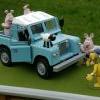

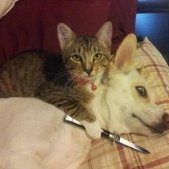
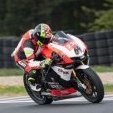

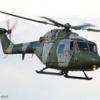


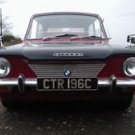
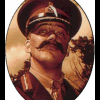
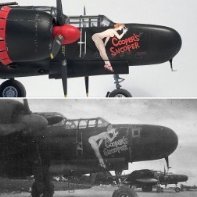

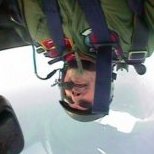


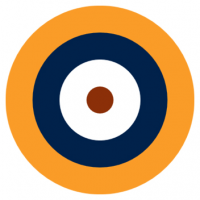


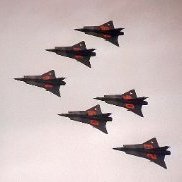


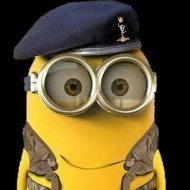
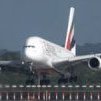

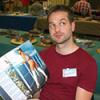

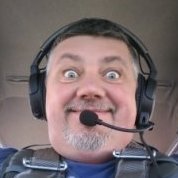
.thumb.jpg.b4a5069fd2c2dd5708ce1694345c5b11.jpg)

